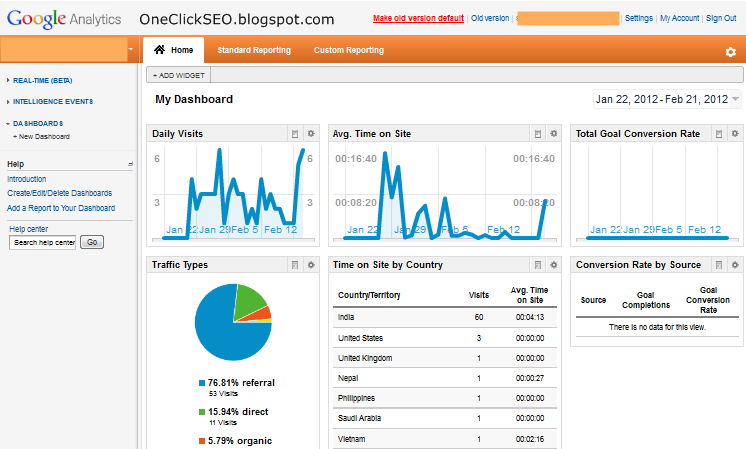Affiliate marketing is where you promote products or services online and earn a commission for every sale made through your referral. Essentially, you’re the middleman connecting customers to products they need. You don’t have to worry about creating or owning the product. You focus on how to attract and convert potential buyers.
Affiliate marketing works through a process where an affiliate (that’s you) signs up for an affiliate program, receives a unique link or code, and shares it within their content. When someone clicks on your link and makes a purchase, you earn a commission. It all boils down to driving traffic and conversions.
As a beginner, why should you consider affiliate marketing? Well, it’s not just cost-effective and highly scalable, it also offers the potential to earn passive income over time. This means that once you’ve put in the initial effort, you can continue to earn from your affiliate links, even when you’re not actively promoting them.
It’s crucial to set realistic expectations when starting out in affiliate marketing. This is not a get-rich-quick scheme, and success won’t happen overnight. Like any other business, it requires time, effort, and a bit of strategy. By understanding these basics and staying consistent, you can build a solid foundation and start seeing results.
Choosing the Right Affiliate Program
Diving into affiliate marketing means picking the right program to partner with. There are many options, so you’ll need to do some homework to determine which ones align with your goals and audience.
Start by researching affiliate networks, which serve as middlemen connecting affiliates with companies offering affiliate programs. Some popular networks include Amazon Associates, ClickBank, and ShareASale. Each network has its own set of rules, commission structures, and types of products, so take the time to understand what they offer.
Next, identifying your niche is crucial. A niche is a specific segment of the market that you’re targeting with your content. It’s important to think about what you’re passionate about or have expertise in. This will make creating content easier, more authentic, and engaging for your audience. Once you know your niche, look for affiliate programs that cater to that specific market.
Evaluating affiliate programs involves checking the commission rates, payment methods, and support provided. High commissions are great, but make sure the products are reputable, and the company pays reliably. Sometimes, lower commission rates with a trustworthy company can be more profitable in the long run.
For beginners, certain affiliate programs are more user-friendly. Amazon Associates is often recommended due to its massive product range and ease of use. Digital product platforms like ClickBank also offer attractive commissions and a variety of niches. Find what’s best suited for your comfort level and expertise.
Building and Optimizing Your Platform
 Choosing the right platform to showcase your content is essential for success in affiliate marketing. This could be a blog, YouTube channel, social media page, or even a podcast. Your choice should depend on where your target audience is most active and what type of content you enjoy creating.
Choosing the right platform to showcase your content is essential for success in affiliate marketing. This could be a blog, YouTube channel, social media page, or even a podcast. Your choice should depend on where your target audience is most active and what type of content you enjoy creating.
Creating valuable content is the heart of affiliate marketing. Whether you’re writing blog posts, filming YouTube videos, or posting on Instagram, the key is to provide useful information that helps your audience. Tutorials, product reviews, and how-to guides can be incredibly effective. For instance, a detailed review of a product you’ve used or a tutorial on how to use a product can be valuable content. Remember, quality content builds trust.
SEO basics are crucial for getting your content in front of more eyes. Use relevant keywords naturally within your content, optimize your titles and descriptions, and make sure your site or channel is easy to navigate. Good SEO practices can significantly boost your organic traffic over time.
Building trust and authority in your niche is a game-changer. Engage with your audience through comments, social media interactions, and even email newsletters. Be honest in your reviews and recommendations. People appreciate transparency and are more likely to make purchases based on your suggestions when they trust you.
Promoting Affiliate Products Effectively
 Promoting affiliate products takes a mix of strategy and creativity. Simply dropping links into your content won’t cut it. You need to think about how to seamlessly integrate those links in a way that provides real value to your audience.
Promoting affiliate products takes a mix of strategy and creativity. Simply dropping links into your content won’t cut it. You need to think about how to seamlessly integrate those links in a way that provides real value to your audience.
Start with content marketing. Long-form blog posts, comprehensive reviews, engaging YouTube videos, and detailed social media posts are excellent mediums. Tell your audience why the product is great, how it works, and any pros or cons. Authenticity resonates—people can tell when you’re genuinely impressed by what you’re promoting.
Social media is a powerful tool. Use it to your advantage by sharing content that includes your affiliate links. Platforms like Instagram, Pinterest, and Facebook can be particularly effective. Try creating stories, posts, and ads to reach a broader audience. Just remember to stay compliant with each platform’s policies regarding affiliate links.
Leveraging email marketing can also be effective. Build an email list and keep your subscribers engaged with valuable content. You can share exclusive deals or personal recommendations directly in your newsletters. This direct line of communication often leads to higher conversion rates.
Keep ethical considerations in mind as you develop content. Always disclose your affiliate relationships. Being upfront with your audience about earning a commission fosters trust and keeps you compliant with the law. Transparency goes a long way in maintaining your credibility as an affiliate marketer.
Maximizing Earnings and Long-term Strategies
After getting the hang of affiliate marketing basics, it’s all about maximizing those earnings and planning for the long haul. Analyzing your performance is the first step. Use tools like Google Analytics or the analytics provided by your affiliate networks to track what’s working and what’s not. Look at metrics like click-through rates, conversion rates, and the overall performance of each piece of content. This data is gold for tweaking your strategies.
Scaling your affiliate marketing business can significantly increase earnings. Once you identify what works, double down on those efforts. Create more content around high-performing products, invest in paid ads, or explore new platforms to expand your reach. The more you scale, the more potential you have for increased income.
Diversifying your income streams is another smart move. Don’t put all your eggs in one basket. Consider joining multiple affiliate programs to reduce risk and increase revenue opportunities. You can also explore other monetization strategies like creating your own digital products or offering consulting services.
Staying updated with industry trends and continuing education is not just crucial, it’s also exciting. The digital marketing landscape is constantly evolving, and by subscribing to industry blogs, joining online communities, and taking a few courses, you can keep your skills sharp and stay open to new opportunities.
Affiliate marketing is a journey, and the key to long-term success lies in consistent effort, learning, and adaptation. With the right mindset and strategies, building a sustainable and profitable affiliate business is possible. Keep pushing forward and exploring new avenues for growth.




